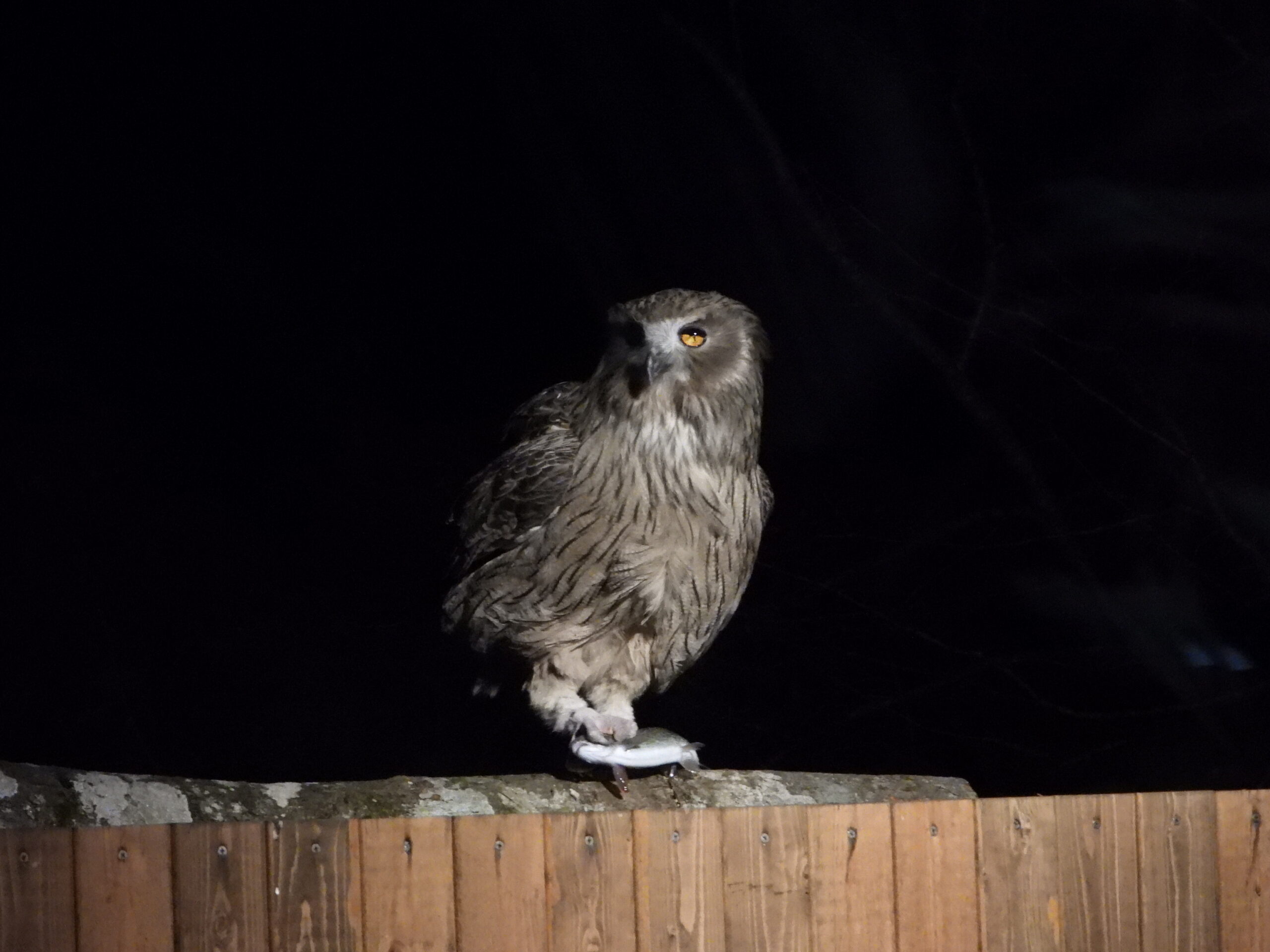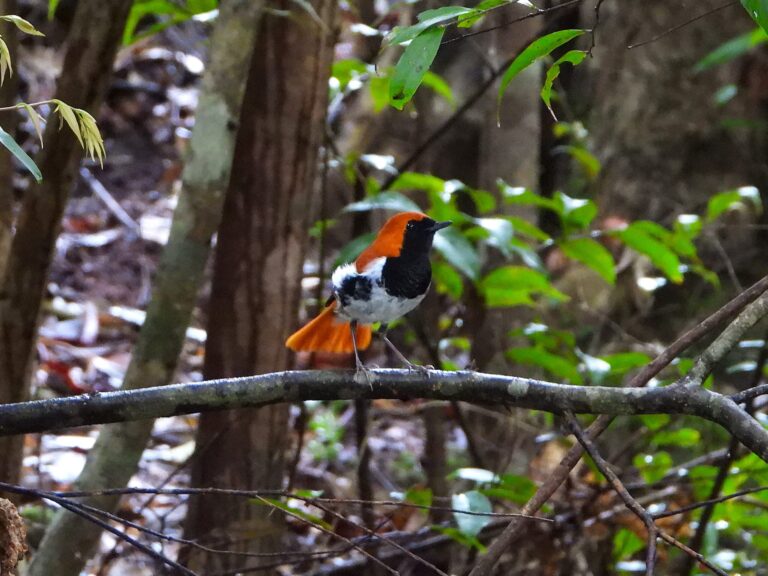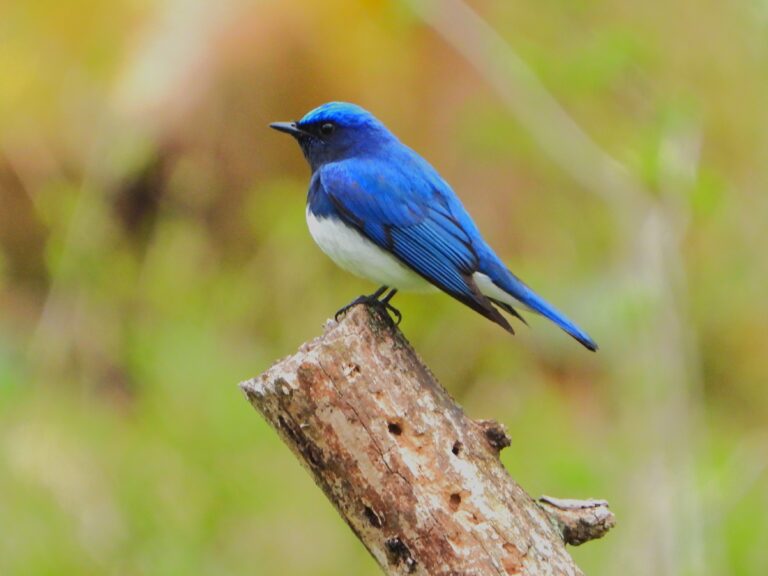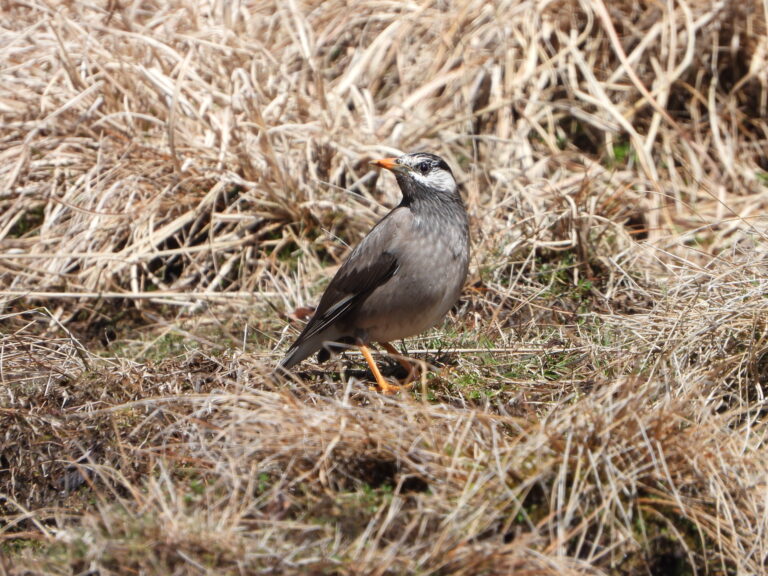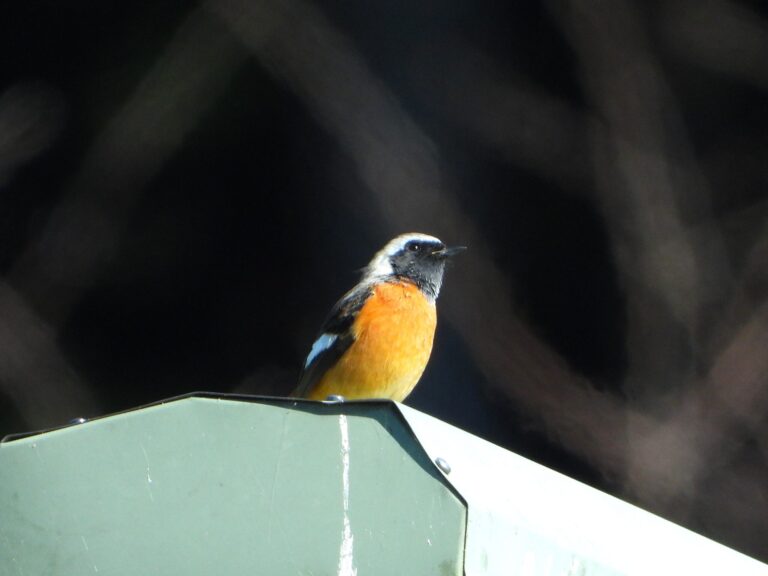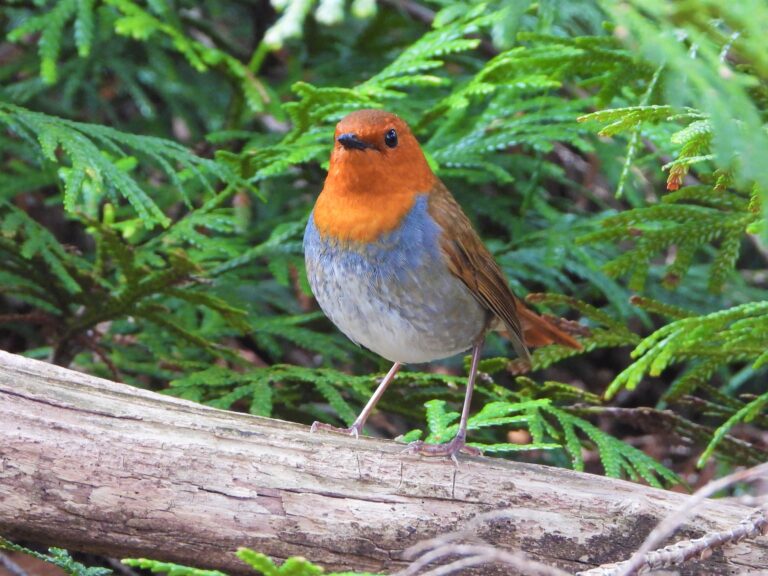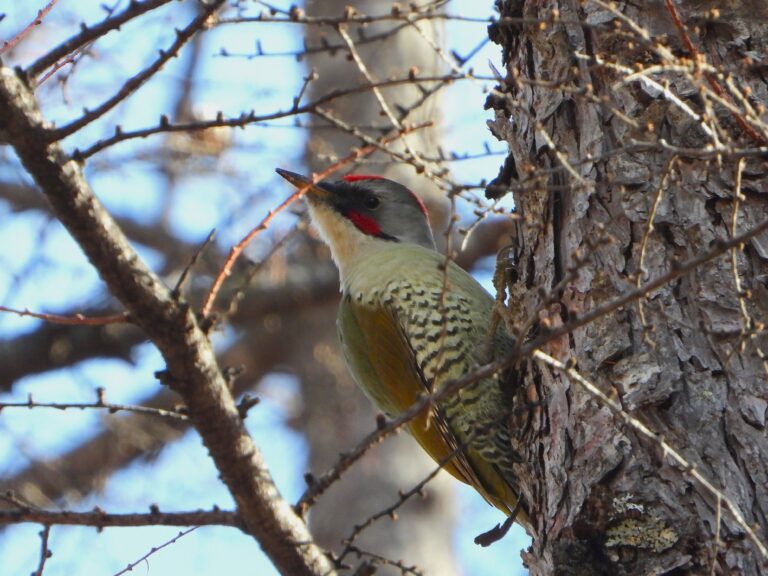Blakiston’s Fish Owl (Ketupa blakistoni) – Wildlife of Japan
Introduction
Among the world’s largest owls, this river-dwelling hunter survives only in small, isolated populations in eastern Hokkaidō.
Blakiston’s Fish Owl is a massive nocturnal raptor inhabiting cold riparian forests. In Japan, it is now confined to Hokkaidō—mainly the eastern region—and is classified as Endangered on the IUCN Red List.
Appearance
The Japanese subspecies (K. b. blakistoni) measures about 66–69 cm in length with a wingspan around 180 cm.
It has straw-brown plumage with dark streaks, short ear tufts, a pale throat, and long, heavily feathered legs.
Rather than the “largest owl in the world,” it is better described as one of the largest, rivaling the Eurasian Eagle-Owl in size.
Habitat & Distribution
This owl depends on old-growth broad-leaved or mixed forests along rivers, springs, and lake shores.
It requires large hollow trees for nesting and ice-free shallows for fishing in winter.
Today, the species is found mainly in eastern Hokkaidō, including the Shiretoko and Kushiro areas, and nearby islands of the northern Kurils.
Historically it ranged across much of Hokkaidō, but logging and river development restricted it to its current strongholds.
Where to See in Japan
Wild individuals should never be approached in the wild.
Observation is possible only under strictly managed, ethical conditions, such as viewing lodges in eastern Hokkaidō (e.g., the Rausu and Yoroushi areas) that operate under conservation guidelines.
At these sites, visitors must remain silent, avoid flash photography, and follow all on-site rules to minimize disturbance.
Advance booking is essential during winter.
Behavior
Primarily nocturnal, the owl hunts by perching beside rivers and sometimes wading into shallow water.
Mated pairs perform deep, resonant duet calls that can carry over a kilometer through the forest night.
Diet
It feeds mainly on fish—salmonids such as pink salmon, char, and Dolly Varden—along with lampreys, loaches, frogs, and occasionally birds or small mammals.
In some protected territories, supplemental fish are provided during harsh winters.
Reproduction
Pairs are lifelong. In Hokkaidō, egg-laying occurs from late February to mid-March, the coldest period of the year.
Clutches usually contain 1–2 eggs.
Because natural cavities in old trees are scarce, many pairs now nest in artificial nest boxes, a key element of local conservation programs.
Conservation
Status: Globally Endangered (IUCN).
Estimated numbers: Around 1,000–1,900 individuals worldwide (≈ 500–850 pairs).
Japan supports roughly 160–170 individuals, mostly in eastern Hokkaidō.
Threats: Habitat loss from logging and river alteration, decline of fish stocks, shortage of old nest trees, and power-line collisions.
Actions: Installation of over 200 nest boxes, habitat restoration of riparian forests, and close monitoring via banding and camera traps.
Long-term survival depends on protecting old-growth riverine forests and maintaining natural fish populations.
Author’s Impression
Hearing that low, booming call over a frozen river felt as if the forest itself were speaking.
I observed this magnificent owl at a well-known lodge in eastern Hokkaidō, following strict ethical viewing rules.
Watching it wade through a snowy stream to catch fish was unforgettable.
Seeing one of Japan’s rarest birds with my own eyes moved me deeply, and reminded me how important it is to respect and protect these wild lives.

